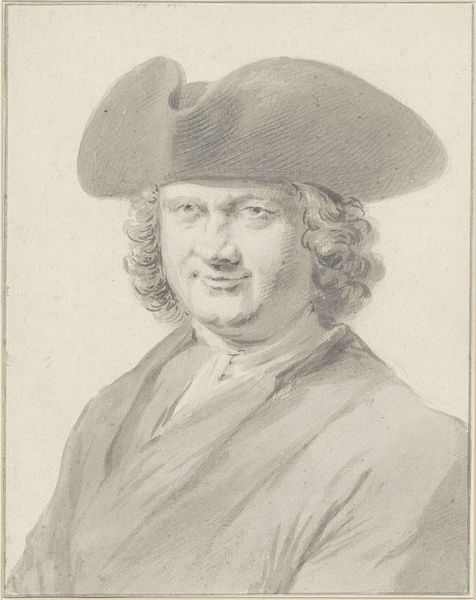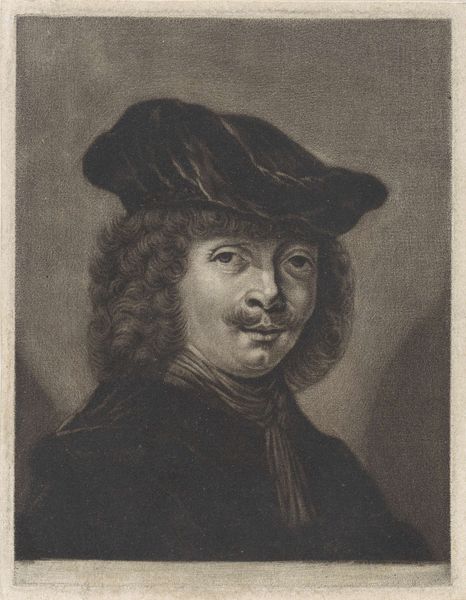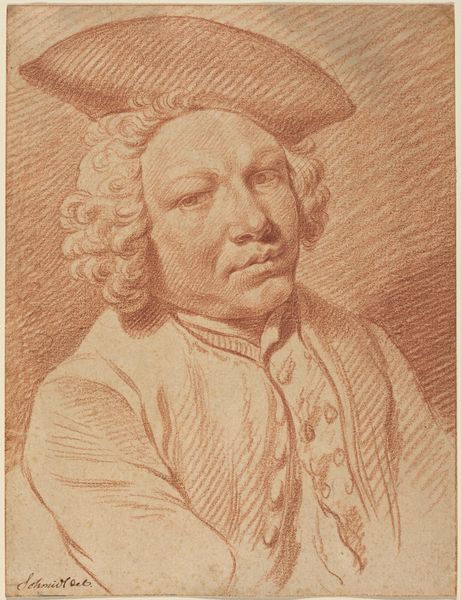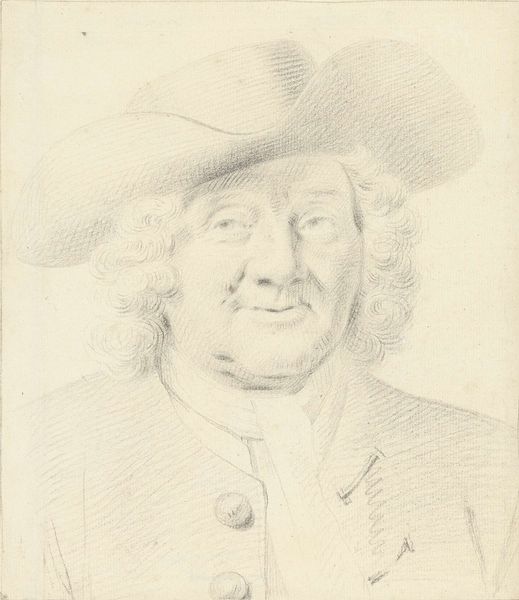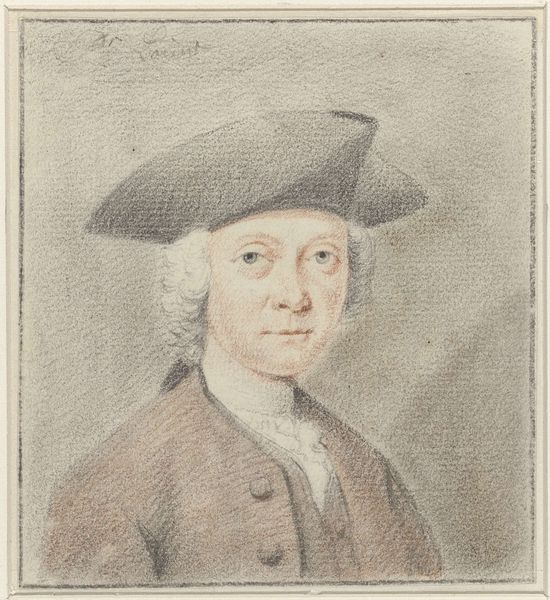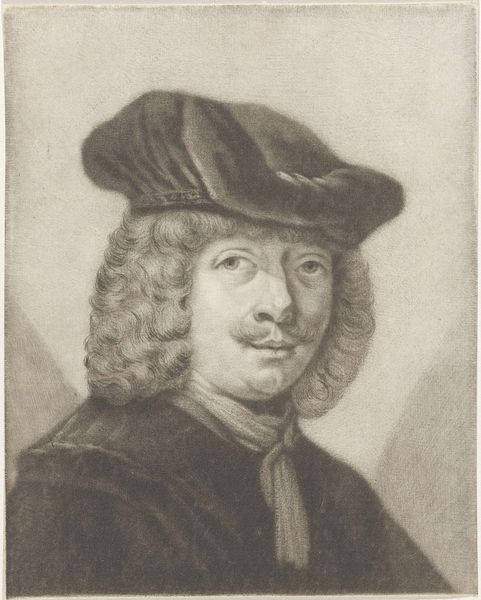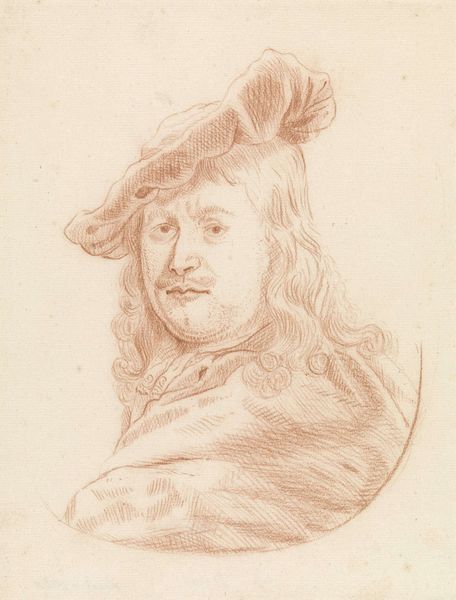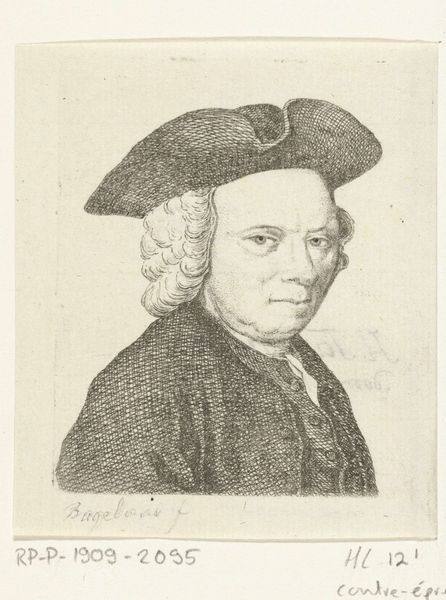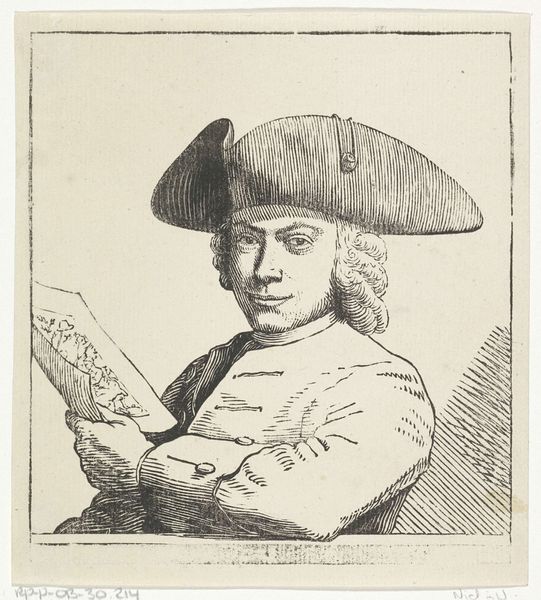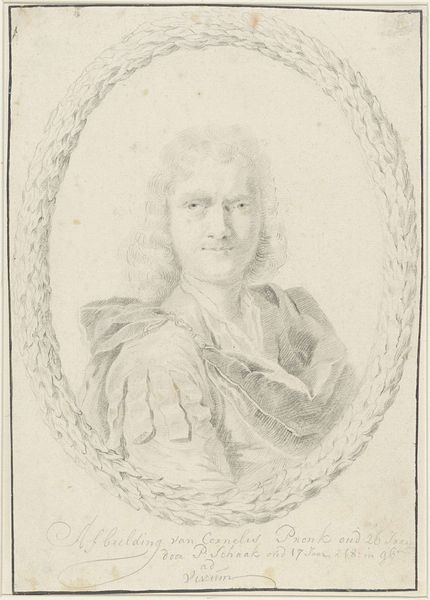
drawing, pencil, graphite
#
portrait
#
pencil drawn
#
drawing
#
baroque
#
charcoal drawing
#
pencil drawing
#
pencil
#
graphite
#
portrait drawing
Dimensions: height 213 mm, width 145 mm
Copyright: Rijks Museum: Open Domain
Curator: Welcome. We’re standing before a self-portrait by Cornelis Pronk, believed to have been created sometime between 1701 and 1759. The piece is rendered in pencil and graphite, showcasing Pronk's mastery of line and form. Editor: It strikes me as unusually serene. Despite being a self-portrait, it doesn't project the ego often associated with such works. The soft graphite lends a sense of gentleness, even vulnerability, doesn’t it? Curator: Indeed. Notice the controlled use of hatching to build up the tonal values. The direction and density of these lines define the forms—particularly the contours of his face and the folds of his clothing—creating depth and volume. The absence of color focuses our attention on these pure, structural elements. Editor: It's hard not to consider the political and social context of the era. Pronk, though a successful draughtsman, worked within a society steeped in mercantilism. This self-portrait, rendered in such a comparatively understated manner, seems to almost resist the opulence and self-aggrandizement favored by other artists of his time. Is this a quiet rebellion? Curator: Perhaps. We might also see this restraint as indicative of a particular artistic trend towards realism in portraiture at that moment, which shunned excessive ornamentation. The baroque often carries connotations of grandiosity. This self-portrait, while technically baroque in its period, emphasizes a different set of values through its precise application. Editor: Yet, there’s still a clear idealization at play, wouldn’t you say? Pronk presents himself as learned and dignified, a clear construction of self despite the simplicity of the materials. His expression and pose convey status and accomplishment—and are clearly communicating those qualities. Curator: You’re right, and by emphasizing certain lines—the confident sweep of the hat's brim or the precise angle of the jawline, the artist constructs not just an image, but a persona. The work encapsulates ideas around how to create an image of oneself through purely formal means, absent overt theatrics. Editor: I'm struck by how contemporary this feels, even now. We grapple daily with questions of self-representation and authenticity in ways I see reflected here. It challenges us to examine our constructed personas, whether baroque or digital. Curator: It provides a case study into how artistic intention communicates character using subtle but considered strokes. A timeless composition.
Comments
No comments
Be the first to comment and join the conversation on the ultimate creative platform.
